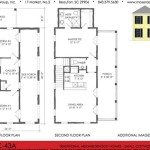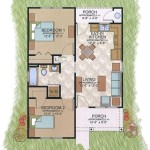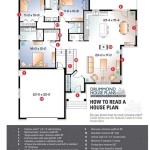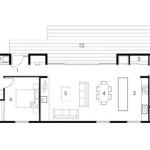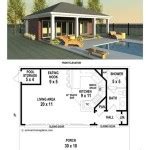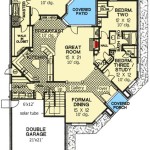Plans To Build a Tiny House: Comprehensive Guidelines Indiana 2024
The interest in tiny house living has surged in recent years, driven by factors such as affordability, minimalist lifestyles, and environmental consciousness. Indiana, like many other states, is experiencing this trend, with individuals and families seeking to embrace the advantages of smaller, more sustainable dwellings. However, navigating the construction and regulatory landscape for tiny houses requires careful planning and a thorough understanding of local guidelines. This article provides comprehensive information on the essential aspects of planning and building a tiny house in Indiana in 2024, offering a foundational guide to ensure a successful and compliant project.
The term "tiny house" often carries varied interpretations. For the purpose of this article in the Indiana context, a tiny house is generally understood as a detached, single-family dwelling ranging from 100 to 600 square feet. It can be built on a permanent foundation (referred to as a tiny house on a foundation) or on wheels (referred to as a tiny house on wheels, or THOW). Each type has specific implications regarding zoning, building codes, and permitting requirements.
Understanding Indiana's Building Codes and Zoning Regulations
The first crucial step in planning a tiny house project in Indiana is to thoroughly research and understand the applicable building codes and zoning regulations. Indiana does not have a statewide building code specifically tailored to tiny houses. Instead, construction falls under the purview of the Indiana Residential Code (IRC) and the Indiana Building Code. However, local municipalities, including cities, towns, and counties, have the authority to adopt and enforce these codes, as well as implement their own zoning ordinances. This local variation is a critical factor to consider, as what is permissible in one jurisdiction may be prohibited in another.
Zoning regulations dictate the allowable uses of land and the types of structures that can be built in specific areas. These regulations typically specify minimum dwelling sizes, setback requirements (the distance a building must be from property lines), and other parameters that can impact the feasibility of a tiny house project. It is essential to contact the local planning and zoning department to inquire about specific requirements for the intended location. Understanding the zoning designation of the property (e.g., residential, agricultural, commercial) is vital, as each designation carries its own set of restrictions.
For tiny houses on foundations, the IRC generally applies, treating them as any other single-family dwelling. This means adhering to requirements for foundation construction, structural integrity, electrical systems, plumbing, and heating/cooling. Meeting these standards can be challenging in a tiny house context, as some IRC requirements are designed for larger structures. Obtaining necessary permits is essential before commencing construction. The permitting process typically involves submitting detailed building plans for review and undergoing inspections at various stages of construction to ensure compliance with the applicable codes. Failure to obtain permits can result in fines, stop-work orders, and even the demolition of the structure.
Tiny houses on wheels (THOWs) present a different set of regulatory challenges. Because they are designed to be mobile, THOWs often fall into a gray area regarding building codes and zoning. Some jurisdictions may treat them as recreational vehicles (RVs), while others may attempt to regulate them as permanent dwellings. If classified as RVs, THOWs may be subject to regulations pertaining to RV parks and campgrounds, which may not be suitable for long-term occupancy. Some areas may prohibit THOWs altogether, viewing them as violating minimum dwelling size requirements or other zoning restrictions. It is critical to clarify the local regulations regarding THOWs with the planning and zoning department before investing significant time and resources in a project.
Designing for Functionality and Compliance
Once the regulatory landscape is understood, the design phase becomes paramount. Designing a tiny house requires careful consideration of space utilization, functionality, and compliance with building codes. Given the limited square footage, every element of the design must be optimized to maximize livability and efficiency.
Prioritizing essential features is crucial. Consider the core needs of the occupants, such as sleeping, cooking, sanitation, and storage. Multi-functional furniture, such as convertible sofas and fold-down tables, can help save space. Vertical space should be utilized effectively with shelving and lofted areas. Careful planning of the layout can create a sense of spaciousness, even in a small footprint.
Compliance with building codes is an integral part of the design process. For tiny houses on foundations, the building plans must adhere to the IRC requirements. This includes structural design, electrical wiring, plumbing layouts, and ventilation systems. Ensuring that the design meets these requirements is essential for obtaining the necessary permits and passing inspections.
For THOWs, the design considerations are slightly different, as they may be subject to RV standards or other regulations. Weight distribution is a critical factor, as exceeding the maximum trailer weight can compromise safety and violate transportation regulations. The design should also accommodate the infrastructure needed for utilities, such as water, electricity, and wastewater disposal. If the THOW is intended to be connected to municipal utilities, the design must comply with the local connection requirements.
Energy efficiency should be a priority in the design of both tiny houses on foundations and THOWs. Proper insulation, energy-efficient windows and doors, and efficient appliances can significantly reduce energy consumption. Consider incorporating renewable energy sources, such as solar panels, to further minimize the environmental impact. Sustainable building materials, such as reclaimed wood and recycled content materials, can also contribute to a more eco-friendly design.
Navigating the Permitting and Inspection Process
Obtaining the necessary permits is a critical step in the tiny house construction process. The specific permits required will vary depending on the type of tiny house (foundation or wheels) and the local jurisdiction. Generally, permits are needed for building, electrical, plumbing, and mechanical systems. The application process typically involves submitting detailed building plans, site plans, and other supporting documentation to the local building department. The plans will be reviewed to ensure compliance with the applicable building codes and zoning regulations. The review process can take several weeks or even months, so it is important to factor this time into the overall project timeline.
Once the permits are approved, construction can begin. However, the project will be subject to inspections at various stages to ensure compliance with the approved plans and the building codes. The inspections typically cover foundation construction, framing, electrical wiring, plumbing, insulation, and final finishing. It is essential to schedule inspections in advance and to be prepared for the inspector's visit. Any deficiencies identified during the inspections must be corrected before proceeding to the next stage of construction.
For THOWs, the permitting and inspection process can be more complex. If the THOW is treated as an RV, it may be subject to inspection by the Indiana Department of Homeland Security's Manufactured Housing Division. The THOW must meet the ANSI A119.5 standard for recreational vehicles, which covers safety requirements for electrical, plumbing, and heating systems. If the THOW is connected to municipal utilities, it may be subject to inspection by the local utility companies to ensure compliance with their connection requirements. It is crucial to understand the specific permitting and inspection requirements for THOWs in the local jurisdiction to avoid potential delays and legal issues.
Building a tiny house in Indiana requires careful planning, a thorough understanding of local regulations, and adherence to building codes. By researching zoning ordinances, designing for functionality and compliance, and navigating the permitting and inspection process diligently, individuals can successfully realize their dreams of tiny house living while ensuring a safe and legally sound dwelling.

Timeless Tiny Homes Custom Home Builder In Indiana

Timeless Tiny Homes Custom Home Builder In Indiana

Timeless Tiny Homes Custom Home Builder In Indiana

Tiny House Laws In Pennsylvania A Complete Guide

Tiny Home Regrets Is Downsizing Worth The Cost Money
:max_bytes(150000):strip_icc()/SL-731_FCP-83e310d6c4f4422a88bd36464339bf30.jpg?strip=all)
26 Tiny House Plans That Prove Bigger Isn T Better

Tiny House Giant Impact Lyles School Of Civil And Construction Engineering Purdue University

Tiny House Marketplace Houses For And
:max_bytes(150000):strip_icc()/SL-1830_FCR-79fe2709870b47fdb6b1fd9561483952.jpg?strip=all)
26 Tiny House Plans That Prove Bigger Isn T Better

600 Sq Ft Tiny House Design Cost Living United Homes
Related Posts


